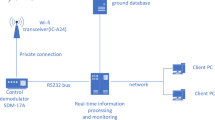Abstract
Tourism is the pillar industry of many cities, and it is also an important key point to promote urban development and maintain urban vitality. At present, the analysis of urban tourism activity in China can better assist the research of regional economic development and promote the orderly development of regional economy. Many scholars have carried out the analysis in this respect. As a new and growing field, artificial intelligence also plays an important role in urban tourism. With the continuous development of science and technology, and the human intelligence field of human research is also developing. New artificial intelligence products continue to emerge. The workload of most artificial intelligence may exceed the manual workload. In order to continuously update artificial intelligence, individuals effectively combine data mining and artificial intelligence, and combine many knowledge disseminated by the network with artificial intelligence technology to create an advanced knowledge network model. This paper uses the OPTICS-based clustering algorithm to analyze the clustering of photographs on the Flickr website and obtain information about tourism activities in Chinese cities. With the help of visualization software to visualize the experimental data and verify the experimental results introduced in this article, city tourism activities can be recommended to the destination. At present, many scholars have studied the application of improved density clustering algorithm in the field of biology and image analysis, but there are still some gaps in the development of tourism. This paper can make some contributions to the related fields.







Similar content being viewed by others
Data availability
Data will be made available on request.
References
Ali E, Xu W, Ding X (2020) Improved optical image matching time series inversion approach for monitoring dune migration in North Sinai Sand Sea: algorithm procedure, application, and validation. ISPRS J Photogramm Remote Sens 164:106–124
Allam Z, Dhunny ZA (2019) On big data, artificial intelligence and smart cities. Cities 89:80–91
Duan L, Xu L, Guo F, Lee J, Yan B (2007) A local-density based spatial clustering algorithm with noise. Inf Syst 32(7):978–986
Fethi MD, Pasiouras F (2010) Assessing bank efficiency and performance with operational research and artificial intelligence techniques: a survey. Eur J Oper Res 204(2):189–198
Figueiredo E, Macedo M, Siqueira HV, Santana CJ Jr, Gokhale A, Bastos-Filho CJ (2019) Swarm intelligence for clustering—a systematic review with new perspectives on data mining. Eng Appl Artif Intell 82:313–329
Guo S, Jiang Y, Long W (2019) Urban tourism competitiveness evaluation system and its application: comparison and analysis of regression and classification methods. Procedia Comput Sci 162:429–437
Hassani H, Huang X, Silva E (2018) Digitalisation and big data mining in banking. Big Data Cogn Comput 2(3):18
Higgins-Desbiolles F (2018) Sustainable tourism: sustaining tourism or something more? Tour Manag Perspect 25:157–160
Huang Y, Cheng Z, Zhou Q, Xiang Y, Zhao R (2020) Data Mining algorithm for cloud network information based on artificial intelligence decision mechanism. IEEE Access 8:53394–53407
Kameshwaran K, Malarvizhi K (2014) Survey on clustering techniques in data mining. Int J Comput Sci Inf Technol 5(2):2272–2276
Kumar K, Thakur GSM (2012) Advanced applications of neural networks and artificial intelligence: a review. Int J Inf Technol Comput Sci 4(6):57
Liu Q, Deng M, Shi Y, Wang J (2012) A density-based spatial clustering algorithm considering both spatial proximity and attribute similarity. Comput Geosci 46:296–309
Romero C, Ventura S (2013) Data mining in education. Wiley Interdiscip Rev Data Mining Knowl Discov 3(1):12–27
Schubert E, Sander J, Ester M, Kriegel HP, Xu X (2017) DBSCAN revisited, revisited: why and how you should (still) use DBSCAN. ACM Trans Database Syst (TODS) 42(3):1–21
Secinaro S, Calandra D, Secinaro A, Muthurangu V, Biancone P (2021) The role of artificial intelligence in healthcare: a structured literature review. BMC Med Inform Decis Mak 21(1):1–23
Funding
The authors have not disclosed any funding.
Author information
Authors and Affiliations
Corresponding author
Ethics declarations
Conflict of interest
The authors declare that they have no conflict of interests.
Ethical approval
This article does not contain any studies with human participants performed by any of the authors.
Additional information
Publisher's Note
Springer Nature remains neutral with regard to jurisdictional claims in published maps and institutional affiliations.
Rights and permissions
Springer Nature or its licensor (e.g. a society or other partner) holds exclusive rights to this article under a publishing agreement with the author(s) or other rightsholder(s); author self-archiving of the accepted manuscript version of this article is solely governed by the terms of such publishing agreement and applicable law.
About this article
Cite this article
Huang, X. Simulation of China’s urban tourism activity based on improved density clustering algorithm. Soft Comput 27, 10033–10044 (2023). https://doi.org/10.1007/s00500-023-08207-8
Accepted:
Published:
Issue Date:
DOI: https://doi.org/10.1007/s00500-023-08207-8




